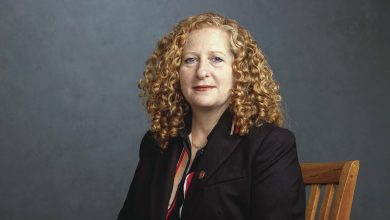Faculty Power Has Risen at Department Level, Fallen at Campus Level, AAUP Finds

[ad_1]
Has the state of shared governance in higher education improved in the past 50 years? The answer depends on how you measure it, according to survey results released on Thursday by the American Association of University Professors.
First, the bad news: Faculty members have lost authority in such institution-level decision-making processes as budget planning and the selection of deans and department chairs since 2001, when the AAUP last conducted a national governance survey. The slide marks a reversal in faculty input, which had increased from 1971 to 2001, according to AAUP data.
The good news is that faculty members have simultaneously enjoyed more influence at the department or program level, on matters such as promotion and tenure decisions, program curricula, and picking department chairs. That trend has persisted over the last half-century.
Faculty-governance leaders at 585 public and private institutions — drawn from a pool of 1,400 bachelor’s, master’s, and doctoral institutions — responded to the 2021 survey, which was based on faculty participation before the Covid-19 pandemic.
Neither the good news nor the bad news should come as a revelation, said Hans-Joerg Tiede, the author of a report on the survey. That faculty members haven’t had as much say in institutional matters has been a common complaint among faculty advocates. The data Tiede compiled in the report back up those anecdotal observations and reinforce the “silo-type operation” that Tiede said had become commonplace: Departments and programs run semi-autonomously within a broader institutional context.
Another well-documented phenomenon, said Tiede, the AAUP’s director of research, helps explain the loss of faculty autonomy: the diminishing proportion of faculty members who are tenured or on the tenure track, and the increase in administrative positions. Assigning more responsibility to new kinds of administrators, and the inability at some institutions for non-tenure-track faculty members to serve in faculty senates or other governance bodies, has amounted to a loss of control for faculty members at the institutional level.
Does that loss of control negate faculty members’ growing influence at a more local level? Not necessarily, Tiede said. The areas where faculty members have exhibited more authority — like departmental hiring decisions — are important, too, and that progress shouldn’t be overlooked.
While the report affirms one popularly held conception about academe — the loss of faculty control at an institutional level — it dispels another: the idea that faculty unions weaken shared governance. On 22 of the 29 criteria he measured in the survey, Tiede found no statistically significant difference in the amount of faculty authority at unionized and nonunionized institutions. (On most of the other criteria, like salary policies and teaching loads, unionized institutions reported more faculty authority, which Tiede attributed to collective bargaining.)
For the first time, the AAUP will offer a version of its survey instrument to faculty members, in the hope they’ll use it to see how their institutions measure up against the national governance standards Tiede found. Bolstered by national figures, Tiede hopes, faculty-governance advocates will be able to argue for improvements on their own campuses. The local questionnaire hasn’t been released yet, Tiede said, but will be available soon.
[ad_2]
Source link






